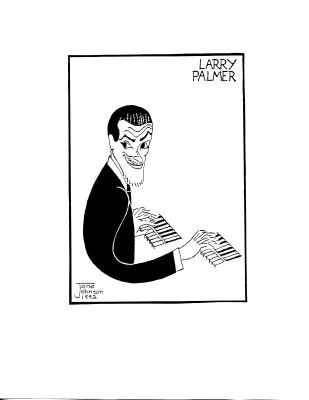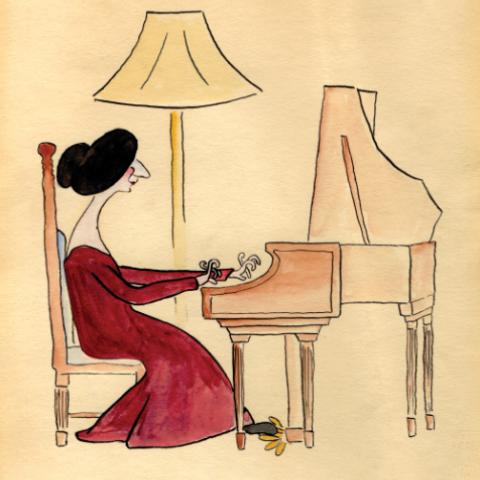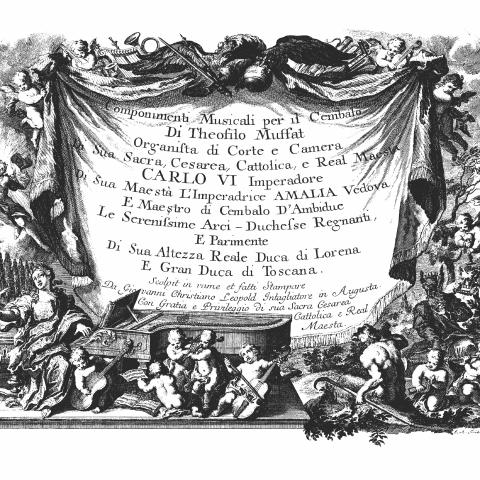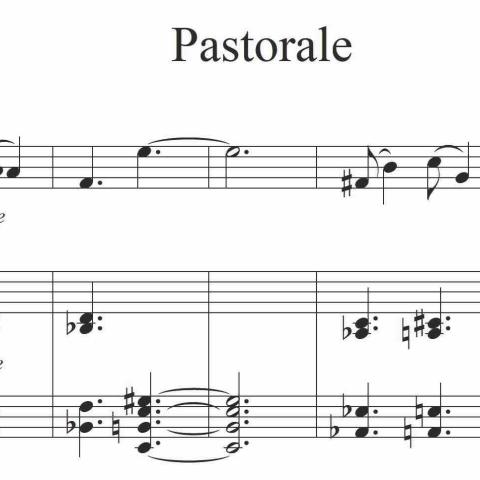
Marches for March
March: the third month of the year in the Gregorian calendar—the only month with a name that has a musical connection. March: a ceremonial procession in 4/4 time. March: a title for a musical composition (unfortunately not found very often in works for harpsichord). While I was searching for a subject to explore this month these definitions popped into my mind. What follows are the titles and some comments about pieces that include the word “march” in scores that I found in my library of harpsichord music.
From Henry Purcell (1659–1695) we have three short examples to be found in his Miscellaneous Keyboard Pieces (edited by Howard Ferguson for Stainer & Bell, Ltd.): in the “Second Part” of Purcell’s Musick’s Hand-Maid (1689) numbers 2 and 4, each comprising sixteen measures in C major, and from A Choice Collection of Lessons (1696/1699), number 19 (also in C)—twenty-two more measures, all three entitled “March.” Ferguson’s second of the two volumes that present his scholarly edition of Purcell’s complete works for harpsichord does not offer a single march in the composer’s Eight Suites. I mention this because I had also perused a Kalmus reprint of the same Eight Suites edited by the Austrian musicologist Ernst Pauer (1826–1905) who took the liberty of adding one of the aforementioned marches as an addition to Purcell’s Suite No. 5 in C Major—a rather extended addition since Pauer also assured that each of the two sections would be repeated by removing the optional repeat marks in both A and B sections, and then making them seem obligatory by printing each section a second time.
From the 1725 Little Notebook for Anna Magdalena Bach we find three short marches: numbers 16, 18, and 23. In order: twenty-two measures in D major and the same number of measures in G major, both credited to C. P. E. Bach; and twenty-eight measures in E-flat major, the composer unknown—all presented in the Henle Urtext Edition. Interestingly those three marches are vastly outnumbered by nine menuets in this iconic volume of Bach family favorites.
Moving on to France, the only François Couperin entry in the “Marche-Fest” is to be found in that great composer’s Fourth Ordre: “La Marche des Gris-vêtus.” I asked author Jane Clark if I might quote her description of this marching piece as it appears in the book (written with Derek Connon), The Mirror of Human Life. With her generous permission,
"A drinking song in honor of the famous regiment with grey uniforms, the words of which go: ‘Let us sing the glory of the grey coats; Let us sing their virtues when we drink, and pay respect to their strength.’"
[My thanks to the author who informs me that a third edition of this indispensable guide to Couperin’s harpsichord works is forthcoming from London’s Keyword Press.]
More French music: from composer Jean-François Dandrieu (1682–1738) we find “Les Caractères de la Guerre” as the final work in his Premier Livre of which “La March” (eighteen measures) is the second section of this suite (Edition Schola Cantorum, 1973, edited by Pauline Aubert and Brigitte François-Sappey). And finally, an inspired and moving composition by Claude-Bénigne Balbastre (1727–1799), who signed his manuscript “le Citoyen [Citizen] Balbastre, 1792—the first year of the Republic”—obviously an astute survivor of the French Revolution and a patriotic one, as well: Marche des Marseillois et l’Air Ça-Ira. A wonderful, vigorous setting of the French national anthem with variations, it is one of my favorite recital pieces, especially during July. This march has Scarlattian hand crossings and a bass C with a downward squiggly line, marked “Canon” (for which I love to use my elbow to make it a thundering tone cluster, usually enough to wake any dozing persons among the listeners). Originally this work was designated for fortepiano, but it also works well as a harpsichord piece (Edition Le Pupitre 52, edited by Alan Curtis for Heugel, Paris).
§
There is a paucity of American-composed marches for harpsichord. A careful perusal of the indices in Frances Bedford’s magisterial catalogue of twentieth-century works for harpsichord and clavichord did not include even one such work for the revived instruments. And so I turned my attention to the earlier history of music on this side of the Atlantic Ocean. Eureka! At least our forefathers’ musical tastes will provide several entries for this month’s topic!
In W. Thomas Marrocco and Harold Gleason’s 371-page survey, Music in America: An Anthology from the Landing of the Pilgrims to the Close of the Civil War 1620–1865 (New York: W. W. Norton, 1964), chapter nine includes both words and music for several delightful additions to our keyboard repertoire. First and foremost is the one-page gem “Washington’s March” from George Willig’s Musical Magazine (Philadelphia, 1794–1795)—eighteen measures of pompous musical delight that I have enjoyed playing on both harpsichord and organ. Early versions of our national anthem and other patriotic songs are also of interest, and at least two Civil War favorites could be adapted for keyboard use: “When Johnny Comes Marching Home” (1863) and “Marching Through Georgia” (1865).
Although it does not have the “m” word in its title I think several voluntaries by William Selby (1738–1798) deserve to be mentioned. The composer, English born, emigrated to Boston, where he became organist of King’s Chapel from 1771 until his death. The beautiful Voluntary in A Major was published in London circa 1770 in a volume of pieces by a host of contributors—ten pieces in all “for the Organ or Harpsichord.” The Selby piece is also included in the book by Gleason and Marrocco and is also the second of two Selby Voluntaries edited by a more recent organist of King’s Chapel, the composer and early music enthusiast Daniel Pinkham (1923–2006). This edition was published by E. C. Schirmer Music in 1972.
Moving southward from New England, I can also recommend a delightful rarity that I purchased from a shop in the Smithsonian Institution, Washington, D.C., in 1975: A Little Keyboard Book: Eight Tunes of Colonial Virginia Set for Piano or Harpsichord by James S. Darling, who was, for many years, organist and choirmaster of Bruton Parish Church in Williamsburg. During my seven years of teaching in Virginia (1963–1970) we met fairly frequently, and both of us had the good sense to purchase a harpsichord from America’s master builder William Dowd.
For Darling’s choice of pieces from Colonial Virginia he selected eight from the manuscript books of the Bolling family, plantation owners in Buckingham County. Following introductory material the first musical item is “Trumpet March,” and the last piece, “Lord Loudoun’s March.” Also of interest to historically oriented musicians is the publication here of the only known work (“Minuet”) by Peter Pelham, organist of the Williamsburg church and jailor for the municipality. This delightful small volume was published in 1972 by the Colonial Williamsburg Foundation (ISBN 0-910412-93-6).
Lastly, I recommend the volume Baroque Folk by Willard A. Palmer (1917–1996), “Moderately Easy to Early Intermediate Piano Solos That Teach”—sixteen familiar melodies arranged in Baroque style (Alfred Music Co., New York, 1969). Opening with three two-part inventions and two minuets, a single march is based on the Israeli National Anthem, Hatikvah. Only one page in length, it is cleverly constructed of imitative counterpoint, and I should think that quite a few of our readers may be organists for Jewish houses of worship as well as for Christian denominations and might, therefore, find special appreciation for their usage of this iconic tune. I will not disclose the other familiar melodies that are presented in new guises in this clever and charming volume. I use several of the arrangements quite often, especially for encores, and it is always a good way to send one’s listeners on their ways, chuckling and humming a favorite tune.And so, dear readers, enjoy the employment of marches in March, and, just perhaps, we might be able to encourage (or commission) one of our American composers to write a new march for use in the year 2021? I have my own particular favorite in mind—or perhaps if we cannot achieve that lofty goal we might just improvise or commit to paper or screen something that we invent for ourselves. Happy March!





